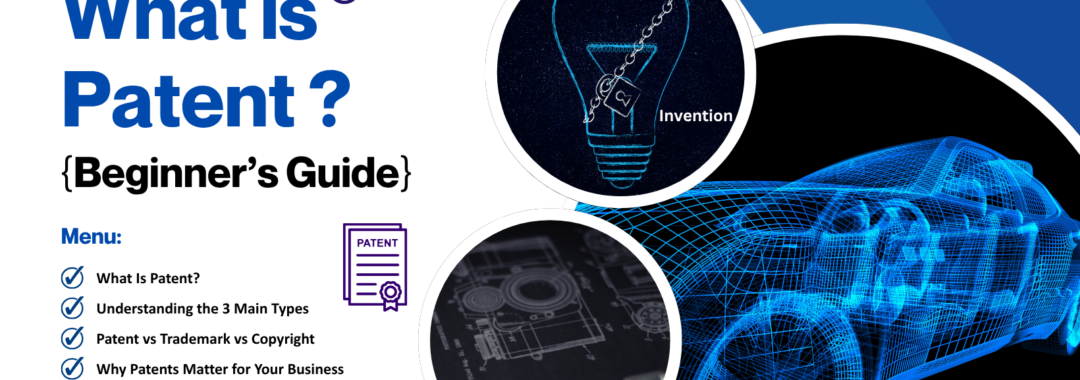[Beginner's Guide] What Is a Patent?
Table of content:
- What is a Patent?
- Understanding the 3 Main Types
- Patent vs Trademark vs Copyright
- Why Patents Matter for Your Business
- Patent Application Process
- Innovation Deserves Protection
In today’s innovative-driven economy, a good idea can become your most valuable business asset. But without legal protection, that idea could be copied, commercialized by others, or even lost forever. That’s why understanding patents—and how they work—is essential for entrepreneurs, inventors, and businesses of all sizes. In this guide, we’ll walk you through the fundamentals of patents and break down the three main types you need to know.
A patent is a legal right granted by the government that gives the patent owner exclusive rights to make, use, sell, or license an invention for a limited period. In return, the inventor discloses the details of the invention to the public. In simple terms: a patent acts like a legal shield for your invention, giving you the power to stop others from using your idea without permission.
Types of Patents
Depending on what you’re trying to protect, you may apply for one of three main patent types:
1. Invention Patent
- Best for: Technical innovations or new products/processes.
- Protects novel, non-obvious technical solutions.
- Requires substantive examination by a patent office.
- Valid for 20 years (with annual maintenance fees).
- Covers inventions like: New Medications, AI Algorithms and Autonomous Driving Systems. If your invention involves a new method or technical improvement, this is likely the right type for you.
2. Utility Model (Short-Term Patent)
- Best for: Practical improvements to product design or structure.
- Often referred to as a "minor invention" or "technical enhancement."
- Usually does not require substantive examination, so the process is faster.
- Valid for 10 years, depending on the jurisdiction.
- Covers ideas like: Improved Bottle Caps, Adjustable Table Legs and Ergonomic Tool Handles. Ideal for SMEs or startups seeking fast, affordable protection for improvements.
3. Design Patent
- Best for: Unique product appearance or visual design.
- Protects the look and feel of a product (shape, lines, color).
- Does not cover functionality or internal structure.
- Valid for 10–15 years, depending on region.
- Used for: Phone Casing, Fashion Accessories and Appliance Exterior Design. Combine design patents with trademarks for full product identity protection.
Patent vs Trademark vs Copyright
Many people confuse patents with trademarks or copyrights. Here is a simple comparison:
|
IP Type |
What It Protects |
Example |
Validity |
|
Patent |
Technical Invention |
Vaccine formula, AI tech |
10–20 years |
|
Trademark |
Brand identity |
Apple®, Nike™ |
Renewable forever |
|
Copyright |
Creative works |
Music, art, code |
Life + 50–70 years |
Patents are mainly aimed at technology and product innovation and are one of the most common technological assets of enterprises.
Why Patents Matter for Your Business
Here’s how companies use patents strategically:
- Licensing: Generate income from third parties using your tech
- Investment: Strong IP portfolios attract serious investors
- Barrier to Entry: Block competitors from using similar tech
- M&A: Valuable IP can increase acquisition value
- Cross-Licensing: Useful for collaboration or avoiding legal conflicts
Patent Application Process
STEP 1 Patent Search & Evaluation
- Check for similar existing patents.
- Evaluate whether your idea is patentable.
STEP 2 Drafting & Filing
- Include technical descriptions, drawings, and claims.
- Professional drafting is recommended to ensure clarity and strength.
STEP 3 Examination
- Formality check (all types).
- Substantive examination (for invention patents only).
STEP 4 Publication & Grant
- Patent is published.
- Public has a chance to oppose.
- If no opposition, patent is granted.
STEP 5 Maintenance & Enforcement
- Pay annual fees.
- Monitor and act against infringement.
If you're building something new, protect it before you show it to the world. Filing a patent isn’t just about legality, it’s a business strategy. Whether you're an individual inventor or a growing company, understanding your IP options puts you one step ahead.

